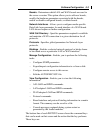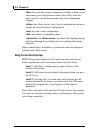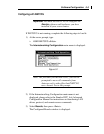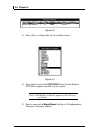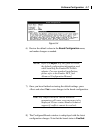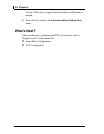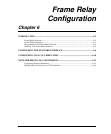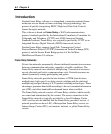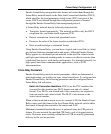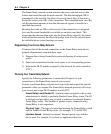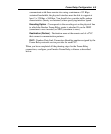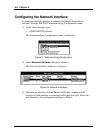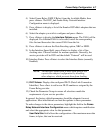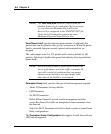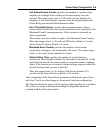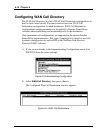
Frame Relay Configuration 6-3
Emulex Frame Relay encapsulates data frames and routes them through the
Frame Relay network based on the Data-Link Connection Identifier (DLCI),
which identifies the local permanent virtual circuit (PVC) end point of the
router. DLCIs are defined through the configuration process or teamed
through the Emulex Frame Relay link management protocol.
A Frame Relay network has the following characteristics:
• Transports frames transparently. The network modifies only the DLCI,
congestion bits, and frame check sequence (FCS).
• Detects transmission, format and operational errors.
• Preserves the order of the frame transfer on individual PVCs.
• Does not acknowledge or retransmit frames.
Using Emulex Frame Relay, you can have a logical end-to-end link (a virtual
private line) between communication end points. Although Emulex Frame
Relay appears as a dedicated private network to the user, the virtual circuits
and high-speed internode trunking make it a more cost-effective service than
a dedicated line service, with similar performance. It is intended primarily for
high-speed, burst data communications applications, such as WAN
interconnections.
Frame Relay Parameters
Emulex Frame Relay network service parameters, which are determined at
subscription time, are in effect on a per virtual circuit basis. To set up and use
Emulex Frame Relay, the following parameters must be configured before
Frame Relay link activation:
Data Link Connection Identifiers (DLCls) are the PVC numbers that
you need for data transfer (one DLCI denotes one end of a virtual
circuit). Two DLCIs, one at each end of the connection, are required to
form one end-to-end virtual circuit. The DLCI is also known as the
virtual circuit number.
When a client workstation needs access to a remote LAN, the Emulex Frame
Relay router sends the frame to the local Frame Relay network switch which
then sends it through the network to the remote end LAN.
Minimum committed bandwidth access is enforced using the CIR protocol
feature. If a user exceeds the specified CIR limit, a risk of dropped packets
exists. However, users working within their set CIR are usually guaranteed
delivery by the service provider.



